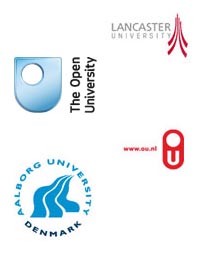

Promoting connections through Community Equity
Mike Johnson, Cardiff University, Cardiff, UK
Following on from previous work (Johnson, 2008a, 2008b), this paper explores a central construct of the 2001 definition of networked learning, ‘promoting connections'. A significant percentage of higher education students do not engage with information technology which stymies their acquisition of working knowledge of IT and digital literacy and hampers their ability to benefit from programmed networked learning opportunities. The author's journey to explore Community Equity (Reiser, 2009a) as an answer to this challenge is briefly described. The system has not been used in higher education yet, its commercial origins are belied by the fact that the software is open source. Community Equity, or CEQ, is proposed as a system that could help to incentivise and measure networked learning in the context of group-based learning in higher education. CEQ plugs into the Atlassian Confluence enterprise wiki platform and counts primary activity, such as sharing a Web link, authoring a blog post or contributing to a wiki. Various proposals have been made concerning how usage data, or analytics, might benefit learners. By contrast, CEQ also takes account of whether the primary activity sparks secondary activity, such as visiting, responding to, and rating the primary activity. It is also possible to include activity from 3rd party social networking sites. Personal CEQ scores for ‘Contribution Equity' and ‘Participation Equity' are displayed confidentially to individual students, and their own ranking is also shown alongside a top-ten leader board which is visible to all. This is clearly in advance of the metrics normally available through Virtual Learning Environments (VLE). It offers to motivate engagement in a variety of ways that include ‘game-based', ‘psycho-social' and economic motivation.
Further work is required to explore student responses to CEQ: whether assessment credit would be required to secure engagement from all students, or whether merely publishing the CEQ scores is sufficient to make networked learning activity a routine part of their daily lives.
The possibilities afforded by CEQ allow us to ask further questions about networked learning as defined in 2001, since, for example, neither CEQ nor the definition make any claims about the quality of the connections or that which travels along them.
This paper is presented in the hope of stimulating debate and developing ideas around these and other related questions central to the theory and practice of networked learning.
Keywords
Networked Learning, Promoting Connections, wiki, collaboration, problem-based learning, learning analytics, social capital, engagement
| About NLC | Welcome Messages | 2012 Conference Proceedings | Conference Organisation |Invited Speakers |Proceedings Handbook | Past Conference Proceedings | Exploring the Theory, Pedagogy and Practice of Networked Learning |Contact |